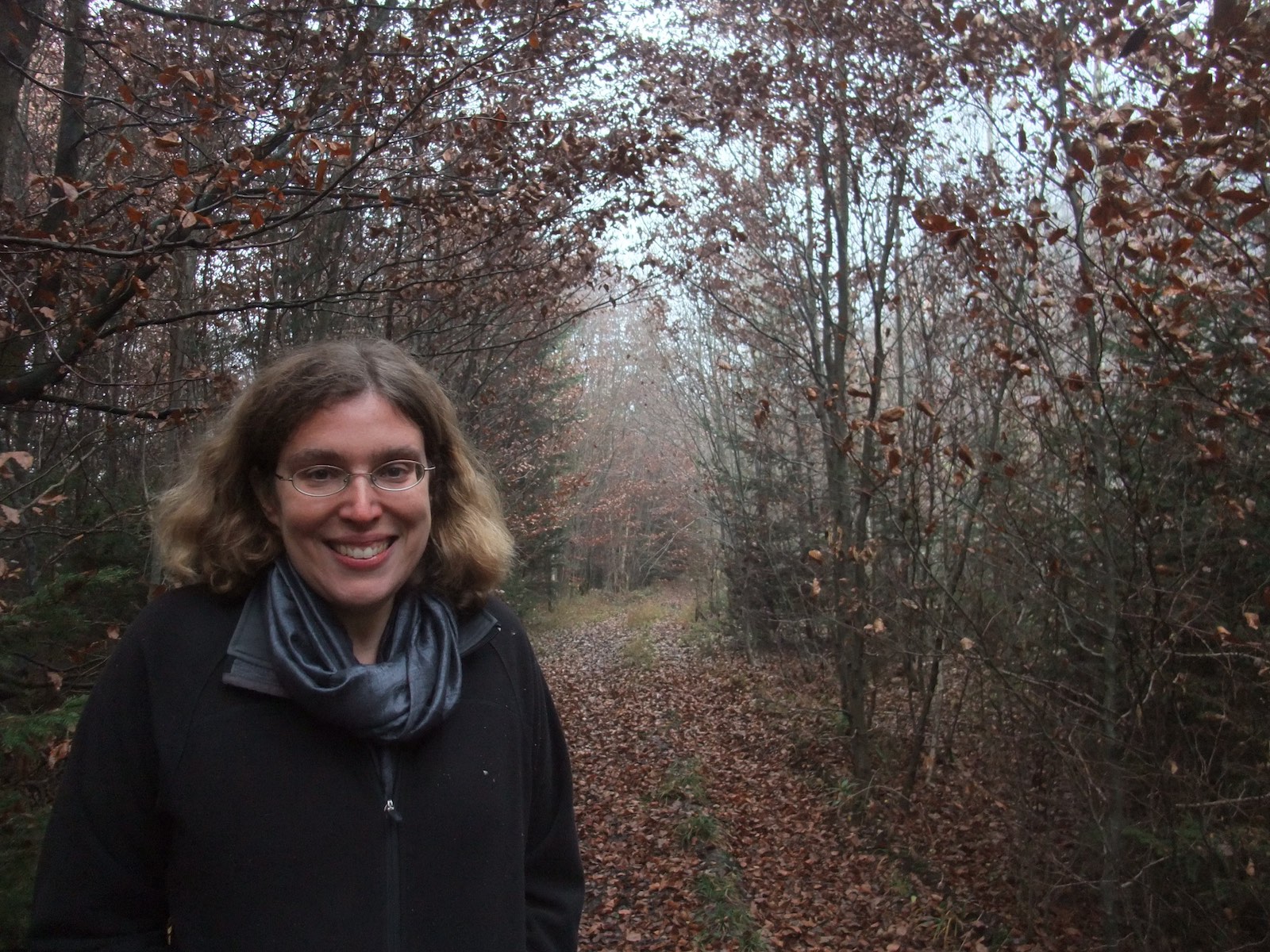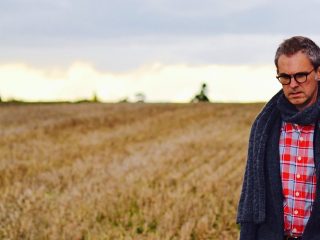
Emily Doolittle
This month, we feature Canadian-born, Glasgow-based composer and oboist Emily Doolittle. Emily has very kindly written detailed notes on her oboe repertoire below. We are very pleased to announce that the first two works mentioned below have also joined the New Oboe Collection in partnership with Composers Edition.
One of my ongoing interests as a composer and a researcher is the relationship between the songs of birds and other animals and human music. Not all of my pieces are based on animal songs, but it so happens that my three pieces which most prominently feature oboe are.
Social sounds from whales at night
for oboe d’amore (or English horn) and tape
duration: 8’00”
Both the oboe d’amore and the tape part of Social sounds from whales at night are drawn almost entirely from the song of the humpback whale. The oboe d’amore begins by playing a transcription of the humpback whale song, while the tape part begins as an accompanimental background made out of altered recordings humpback whale song, sperm whale clicks, musician wren song, and one grey seal “rup” call. As the humpback whale song itself begins to emerge from the tape part, the oboe d’amore and the whale sing in duet, before the oboe d’amore takes over with an improvisation based on the whale’s musical language.
Social sounds was commissioned by the Canada Council for the Arts for Helen Pridmore, and the solo part was transcribed for oboe d’amore at the request of Catherine Lee. Thanks to Patrick Miller, Luke Rendell, Thomas Goetz and Henrik Brumm for the whale, seal, and bird recordings.
The recording is by Catherine Lee, from her CD “Social Sounds”
http://www.catherinemlee.com/site/

For more information about this work and to buy the score click here
falling still
for oboe, violin, viola and cello
duration: 5’30”
Falling still is related to animal songs in quite an abstract way. Rather than imitating or taking motivic or structural ideas from any particular animal song, it explores the difference between the kinds of sounds that are made by birds or other animals, and the kinds sounds that are the result of natural processes. Both types of sounds can be beautiful or interesting, even though the former are the result of choices and preferences of a living being (whether on an individual or an evolutionary level), while the latter are the byproduct of physical processes. In this piece the oboe melody is parallel to a bird song – flexible, ever changing, and a result of aesthetic decisions – while the descending chord progression in the lower strings represents cyclical, inanimate sounds like wind, rain, or waves. Once the process – in this case a 16-chord progression which descends a minor 7th and then repeats – has been set in motion, it undergoes very little variation. Only one time are the descending chords significantly altered to interact with the melodic oboe line.
Falling still underwent a slightly circuitous route to its current form as an oboe quartet. The initial melodic idea was conceived for oboe, but when I was asked to write a piece for violin and string orchestra I decided to develop it for that piece instead. Years later, oboist Ashley Barrett asked me to transcribe it for oboe and three strings, and I was delighted to finally have the chance to hear it that way too! Falling still was commissioned by the Canada Council for the Arts for Tafelmusik, and premiered at Scotia Festival of Music.
This recording is by Brent Hages, Mikhail Schmidt, Mara Gearman, and David Sabee, and is on my CD All Spring which can be purchased here:
https://www.musiccentre.ca/node/135284
Another recording, by Ashley Barret, is available here:

For more information about this work and to buy the score click here
REEDS
for oboe, clarinet, bassoon and dancer
duration: 36’00”
REEDS is a site-specific piece for reed trio and dancer, which explores the birdsongs and other sounds that can be heard at Oxen Pond in St. John’s, Newfoundland. It begins with the cacophonous chorus of summer songbirds resident in July and then follows the changing soundscape of the year, examining the sounds of water birds, migrating geese, the nearly-silent stillness of the winter, and spring peepers, before returning to songbirds in full song. None of the music in REEDS is freely composed: even the parts that sound surprisingly melodic are more or less direct transcriptions of the birdsongs or other Oxen Pond sounds. The instrumentalists are provided with the songs and the general structures for each month, but are given quite a bit of freedom in how they interpret them. The dancer choreographs the dance in collaboration with the instrumentalists, and perhaps including the movement of the instrumentalists in the choreography. Though initially written for an outdoor performance at Oxen pond, the work has since been performed in a variety of indoor and outdoor locations.
REEDS was commissioned by Catherine Lee and the Umbrella Ensemble for performance at the 2010 Newfoundland Sound Symposium.
Please contact the composer at emilydoolittle[at]gmail[dot]com to acquire the score.
About Emily Doolittle
Composer (and former oboist) Emily Doolittle was born in Nova Scotia in 1972 and educated at Dalhousie University, the Koninklijk Conservatorium in the Hague, Indiana University and Princeton. Her principal teachers include Louis Andriessen, Steve Mackey, Barbara White, Paul Lansky, Don Freund, and Dennis Farrell. From 2008-2015 she lived in Seattle, Washington, where was an Associate Professor of music theory and composition at Cornish College of the Arts. She now lives in Glasgow, Scotland.
Doolittle has composed for such ensembles as Orchestre Métropolitain, the Vancouver Island Symphony, Tafelmusik Baroque Orchestra, Symphony Nova Scotia, Ensemble Contemporain de Montréal, the Albany Symphony, the Voice Factory Youth Choir, the Motion Ensemble, Paragon, Talespin, and the Fung-Chiu Duo, and soloists including sopranos Janice Jackson, Patricia Green and Helen Pridmore, pianist Rachel Iwaasa, viola d’amorist Thomas Georgi, and viola da gambist Karin Preslmayr. Her most recent piece is Jan Tait and the Bear, a chamber opera based on a Shetlandic folktale, and written for the UK’s northernmost chamber ensemble, ffancytunes. Doolittle’s work has been supported by the Sorel Organization, the Canada Council for the Arts, the Conseil des arts et des lettres du Québec, the Artist Trust, the Seattle Office of Arts and Cultural Affairs, the Jack Straw Foundation, the Eric Stokes Foundation, the Culture and Animals Foundation, the Nova Scotia Arts Council, the Conseil des arts de Montréal and the Fulbright Foundation.
One of Doolittle’s ongoing interests is the relationship between bird and other animal songs and human music, something she has explored both in music and in collaborative research projects with scientists. In 2011, she was artist-in-residence at the Max Planck Institute for Ornithology in Seewiesen, Germany, where she wrote a piece based on the songs of duetting birds, presented a concert of her birdsong-related works performed by musicians from the Bavarian State Opera, and co-wrote a paper on the song of the musician wren with ornithologist Henrik Brumm. In 2014, she published a paper on the overtone series in hermit thrush song, co-authored with biologists Bruno Gingras, Dominik Endres and Tecumseh Fitch. Other interests include the traditional music of various cultures and community music-making. From 2010-2015 she played fiddle in the Seattle-based French Canadian traditional band Podorythmie.
Further information can be found at www.emilydoolittle.com.



